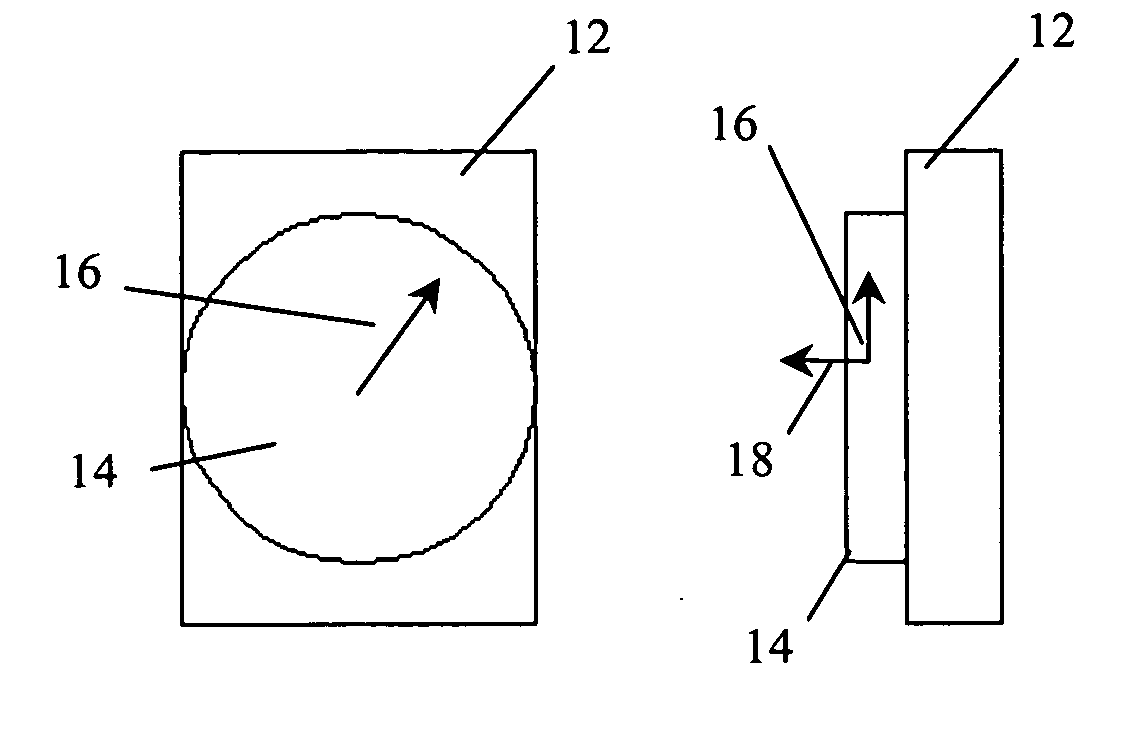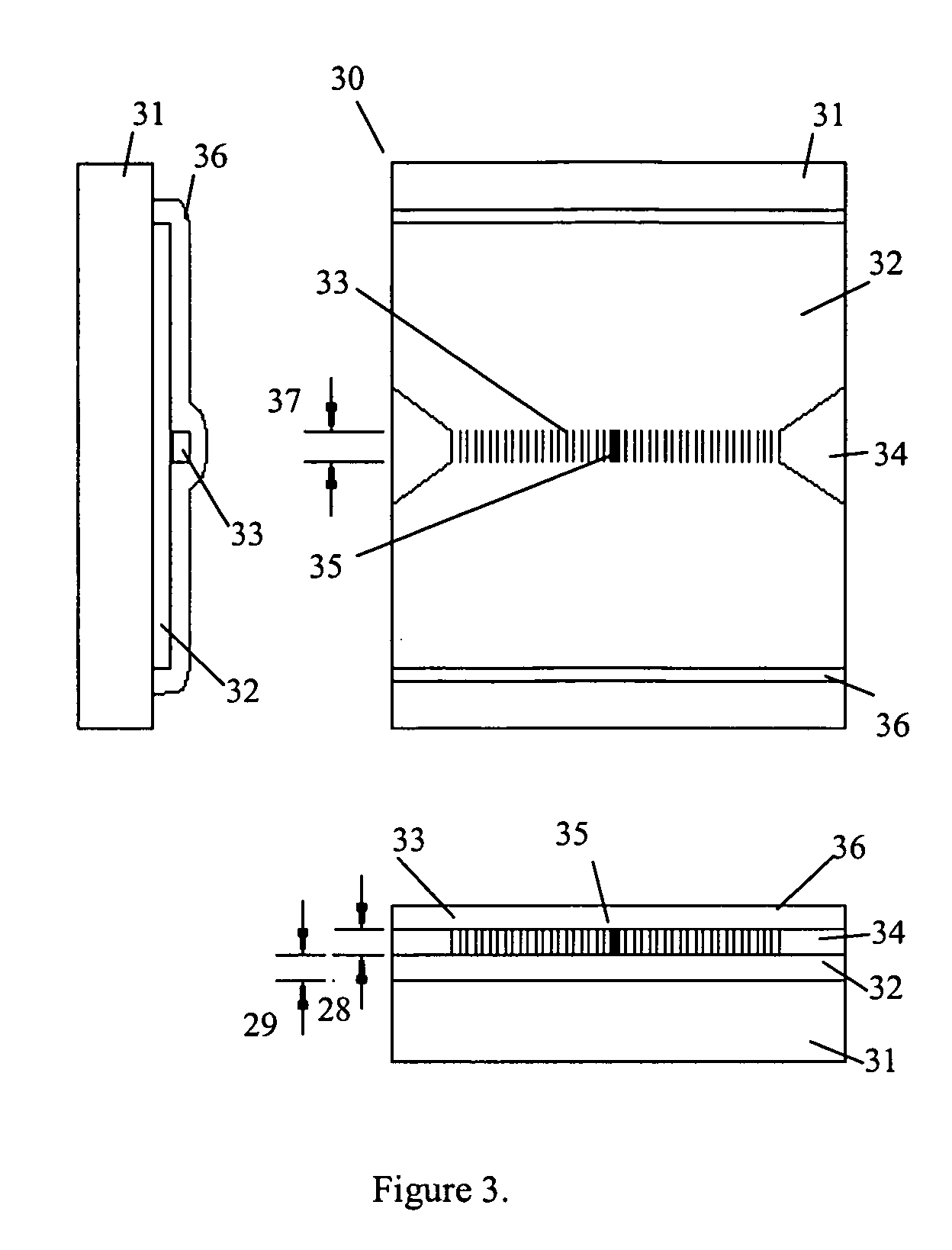Magneto-optical resonant waveguide sensors
a technology of magnetic resonance waveguide and magnetic field, applied in the direction of magnetic measurement, instruments, measurement devices, etc., can solve the problems of low sensitivity of most optical materials, lack of proper material form, and signal is thus vulnerable to amplitude variability and interference, and achieve accurate and unambiguous detection, increase measurement sensitivity and resolution, and reduce polarization sensitivity
- Summary
- Abstract
- Description
- Claims
- Application Information
AI Technical Summary
Benefits of technology
Problems solved by technology
Method used
Image
Examples
Embodiment Construction
[0025] An exemplary illustrative non-limiting magneto-optical waveguide sensor is based on MO effects occurring in optical waveguide resonant structures with waveguide modes at least partially localized in the magneto-optical layers, which effects are the so-called nonreciprocal magneto-optic effects of transverse magnetic (TM) waveguide modes [Bahlmann N., Chandrasekhara V., Erdmann A., Gerhardt R., Hertel P., Lehmann R., Salz D., Schroteler F. J., Wallenhorst M., Dotsch H., “Improved design of magnetooptic rib waveguides for optical isolators”, Journal Of Lightwave Technology 16: (5) 818-823 (1998)], [Wallenhorst M., Niemoller M., Dotsch H., Hertel P., Geghardt R., Gather B., “Enhancement of the Nonreciprocal Magnetooptic Effect of TM Modes using Iron-Garnet Double-Layers with Opposite Faraday-Rotation”, JAP, 77: (7) 2902-2905 (1995)]. The physical basis of the sensing mechanism is the dependence of the effective refractive index of the TM mode in the waveguide structure containin...
PUM
 Login to View More
Login to View More Abstract
Description
Claims
Application Information
 Login to View More
Login to View More - R&D
- Intellectual Property
- Life Sciences
- Materials
- Tech Scout
- Unparalleled Data Quality
- Higher Quality Content
- 60% Fewer Hallucinations
Browse by: Latest US Patents, China's latest patents, Technical Efficacy Thesaurus, Application Domain, Technology Topic, Popular Technical Reports.
© 2025 PatSnap. All rights reserved.Legal|Privacy policy|Modern Slavery Act Transparency Statement|Sitemap|About US| Contact US: help@patsnap.com



